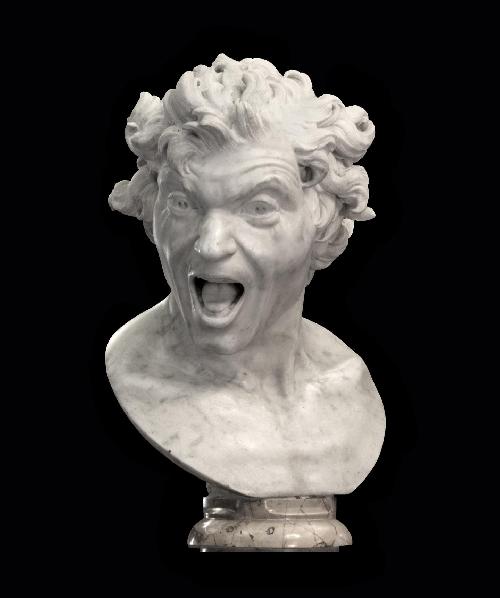The renowned 'Animas', two marble heads considered one of the most important works of baroque sculptor, painter and architect Gian Lorenzo Bernini's youth, are not a representation of a Christian soul's personification enjoying the pleasures of the Heaven or tormented by the punishment received in Hell (as believed until now), but they really are mythologically themed sculptures: a nymph and a satyr, respectively.
This revelation came from David García Cueto, Arts History professor at the University of Granada (UGR), in an article published in the renowned Sculpture Journal magazine, belonging to the University of Liverpool (United Kingdom). In his article, García Cueto comes to this astonishing conclusion about these two renowned sculptures that can be seen at the Spanish Embassy in front of the Holy See (Rome).
García Cueto has propossed that the 'Animas' are mythologically themed sculptures based on unpublished documents of that time coming from the Archivio Storico Capitolino (the Roman Historical Archives) in Rome. "This revelation opens the way to a new interpretation of his work, absent in Bernini's huge historiography until now", the researcher stresses.

The first conclusions of this research were published in February 2015 in a conference held at Museo Nacional del Prado (Madrid, Spain) on the occasion of the exhibition 'Bernini, Roma y la Monarquía Hispánica, siglos XVI-XVIII' (HAR2014-52061-P) [Bernini, Rome and the Spanish Monarchy, XVI-XVIII centuries].
Gian Lorenzo Bernini (1598-1680) was an Italian sculptor, architect and painter. He worked in Rome, mainly, and he is considered the most prominent sculptor of his generation and creator of the baroque sculpture style.
Bernini had the ability to express very dramatic narrative scenes in his sculptures. He was able to capture intense psychological states and also to compose sculpture sets transmitting a magnificent grandeur. His ability to sculpt marble lead to him being seen as a worthy successor to Michelangelo, and far above other artists of his time such as Alessandro Algardi and François Duquesnoy.




Comments